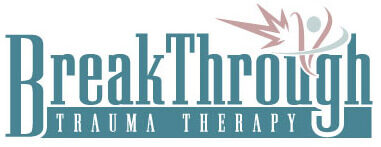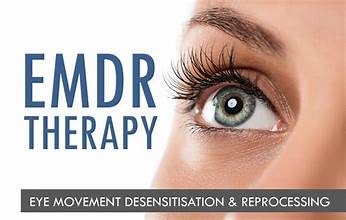Eye Movement Desensitization and Reprocessing (EMDR) therapy is a recent intervention for trauma, anxiety, and depression disorders. The evidence-based therapy began in 1989, while
other treatments have been in operation for much longer. Here is a deep dive into this critically acclaimed psychotherapy to enrich your understanding of its efficiency.
EMDR Therapy Definition
EMDR is an evidence-based therapy that reduces trauma symptoms through bilateral stimulation and recalling a traumatic memory. Bilateral stimulation uses sensory stimuli on both
sides of the body to activate both sides of the brain to process traumatic memories, thoughts, and emotions. The simulations include:
- Auditory techniques – the use of rhythmic tones or taps that alternate from the left and right sides of the brain
- Tactile stimulation – alternating taps on the hands or knees to stimulate both brain sides.
- Visual techniques – left to right eye movements using a finger or object as guidance
How EMDR Works
Memory Activation
During therapy, the patient focuses on a particular traumatic memory.
Bilateral Stimulation
The therapist performs one of the bilateral stimulation techniques.
Memory Integration
The brain processes the traumatic memory, often leading to a new perspective and healthy rationalization.
Memory Processing
The memory becomes less distressing and easily incorporated into the client’s life story.
The Science Behind EMDR
EMDR’s theoretical foundation stems from the Adaptive Information Processing (AIP) model. The AIP model explains how the brain processes memories and why EMDR provides the
perfect solution. The theory states that the hippocampus, a memory-processing brain part, creates inadequately processed memories and stores them as encapsulated isolated memory networks. This isolation interferes with a person’s capacity to integrate and understand a traumatic event.
The hippocampus does not work in isolation. It integrates with the amygdala and prefrontal cortex. During a traumatic experience, all these brain regions get distorted in size and function,
resulting in physical, emotional, physiological, and emotional trauma symptoms. These effects leave you vulnerable to other mood disorders.
How The Brain Processes Memories
The Amygdala
The amygdala is the brain’s stress response center. It oversees the processing of traumatic memory and activates anxiety. The amygdala picks up distress signals from the internal and the external environment, encodes and integrates all sensory information, and sends the memory to the hippocampus.
A traumatic event over-stimulates the amygdala, causing it to record and process memory in fragmented cues. The amygdala then transmits the faulty memory to the hippocampus. It also activates and sustains the stress response, also known as anxiety.
The Physiological Impact of The Amygdala
The amygdala sends signals to the hypothalamus, the brain’s command center, which activates the sympathetic nervous system. The sympathetic nervous system stimulates the adrenal
glands to release adrenaline, the primary stress hormone. Adrenaline prompts a cascade of physiological processes to prepare the body for fight or flight.
Adrenaline increases breathing, blood flow, and heart rate to increase oxygen supply to the muscles and brain. The muscles use oxygen as fuel for energy production for muscular
contraction and relaxation, while the brain uses it to increase alertness against the threat.
Additionally, adrenaline stimulates the release of cortisol, another stress hormone that mobilizes glucose to the brain and muscles for energy production. Cortisol also suppresses other bodily
functions, such as the immune system and activity in the gut, to reduce energy expenditure. Its action in the gut explains the nausea and diarrhea prevalent when anxious.
Cortisol sustains anxiety long-term. It rewires the brain to exist in survival mode. The hypersensitive amygdala works overtime, picking phantom distress signals and reacting to hippocampus and prefrontal cortex cues. Its hypervigilance produces a perpetual anxiety state.
The Hippocampus
The hippocampus is the brain’s contextual memory center. It encodes emotional memory by integrating cues such as sights, sounds, touch, and everything relating to an event. The hippocampus also consolidates memories by transforming short-term memory into long-term memory.
During a traumatic event, the hippocampus distorts the encoding and consolidation process, creating disjointed memory networks. The distorted memories manifest as flashbacks, vivid
nightmares, and intrusive thoughts. The memories lack vital cues such as the sense of time, making someone think the traumatic event was happening in real time.
The Prefrontal Cortex
The prefrontal cortex is responsible for emotional memory processing. It evokes an emotional response whenever you retrieve a memory from the hippocampus. The prefrontal cortex also
labels emotional memories as pleasant or unpleasant through a process known as toning and informs your understanding and perception of the emotional memory.
However, a traumatic event hyper-stimulates the prefrontal cortex, making it overactive to the faulty traumatic memory from the hippocampus. It responds to the hippocampus’ intrusive thoughts, vivid nightmares, and uncontrollable flashbacks as the traumatic event, evoking an emotional avalanche.
How EMDR Therapy Resolves the Memory Glitch
Through memory focus and bilateral stimulation, EMDR reprocesses the isolated memory fragments, promoting adaptive integration. The AIP model states that the memory fragments are
responsible for the trauma-related symptoms.
The EMDR enables the brain to integrate these memories into the correct cues, encouraging thought and emotional rationalization, accurate contextualization and toning, and reduced
amygdala stimulation. In simple terms, this helps you process traumatic memories, reduces the severity of trauma symptoms, and enhances your response to behavioral therapy.
EMDR Therapy Sessions
EMDR therapy does not require medication or emotional and behavioral modification. Each therapy session focuses on a specific traumatic memory. Therapy occurs between 6 to 12 brief
sessions, with many patients not requiring all sessions to experience relief.
Try EMDR Therapy Today
Mood disorders are debilitating. They interfere with the quality of life. You do not have to contend with frequent anxiety attacks, despair, worry, or hypervigilance. EMDR therapy is a
simple and effective therapeutic intervention for all mood disorders, from anxiety to depression and trauma-related mental illnesses.
Healing from a traumatic event begins with you. All it takes is reaching out to an EMDR therapy specialist. The sessions do not require medication, talk therapy, or any invasive technology.
Start your healing journey today with EMDR therapy under the guidance of a certified counseling psychologist.

